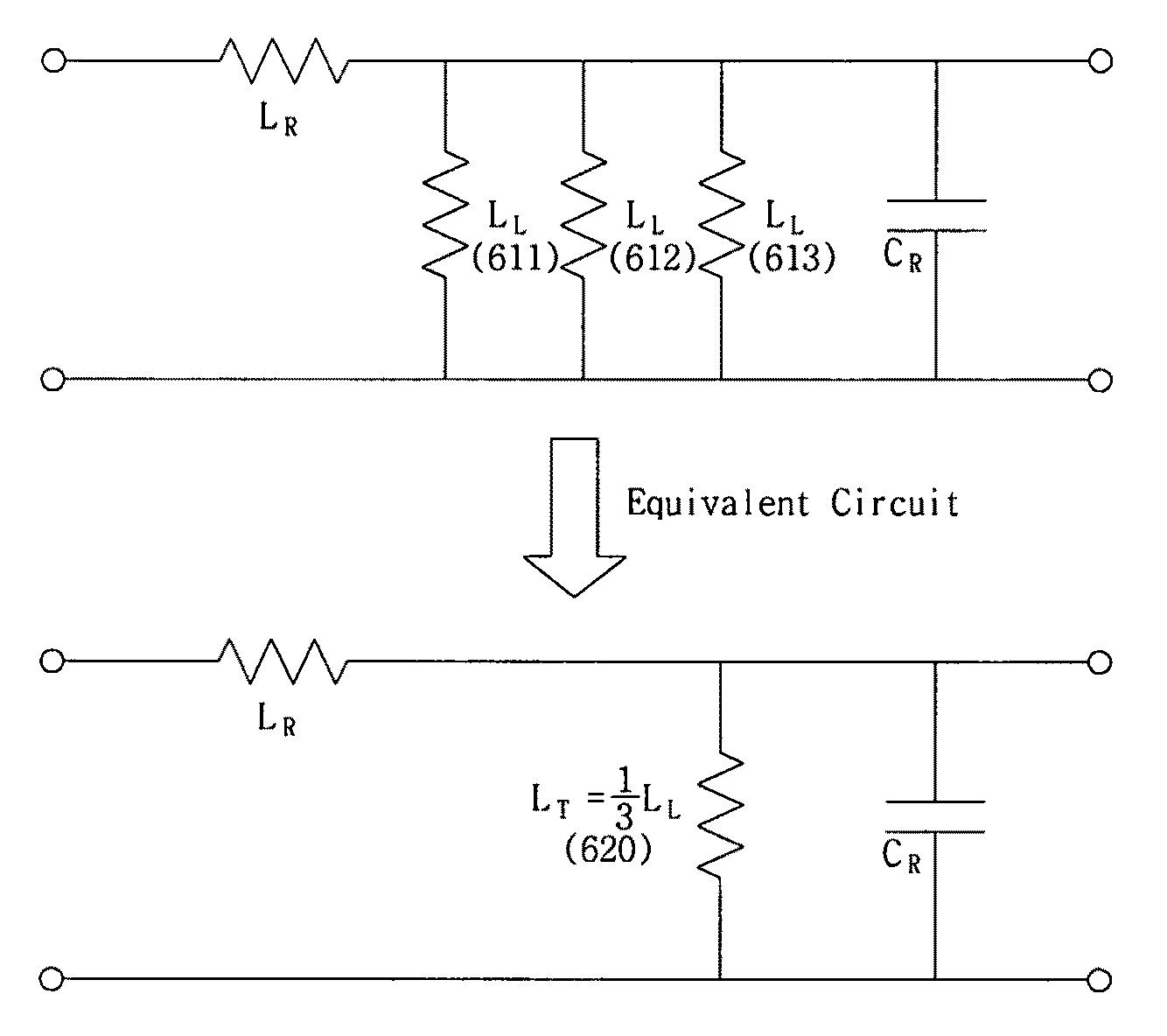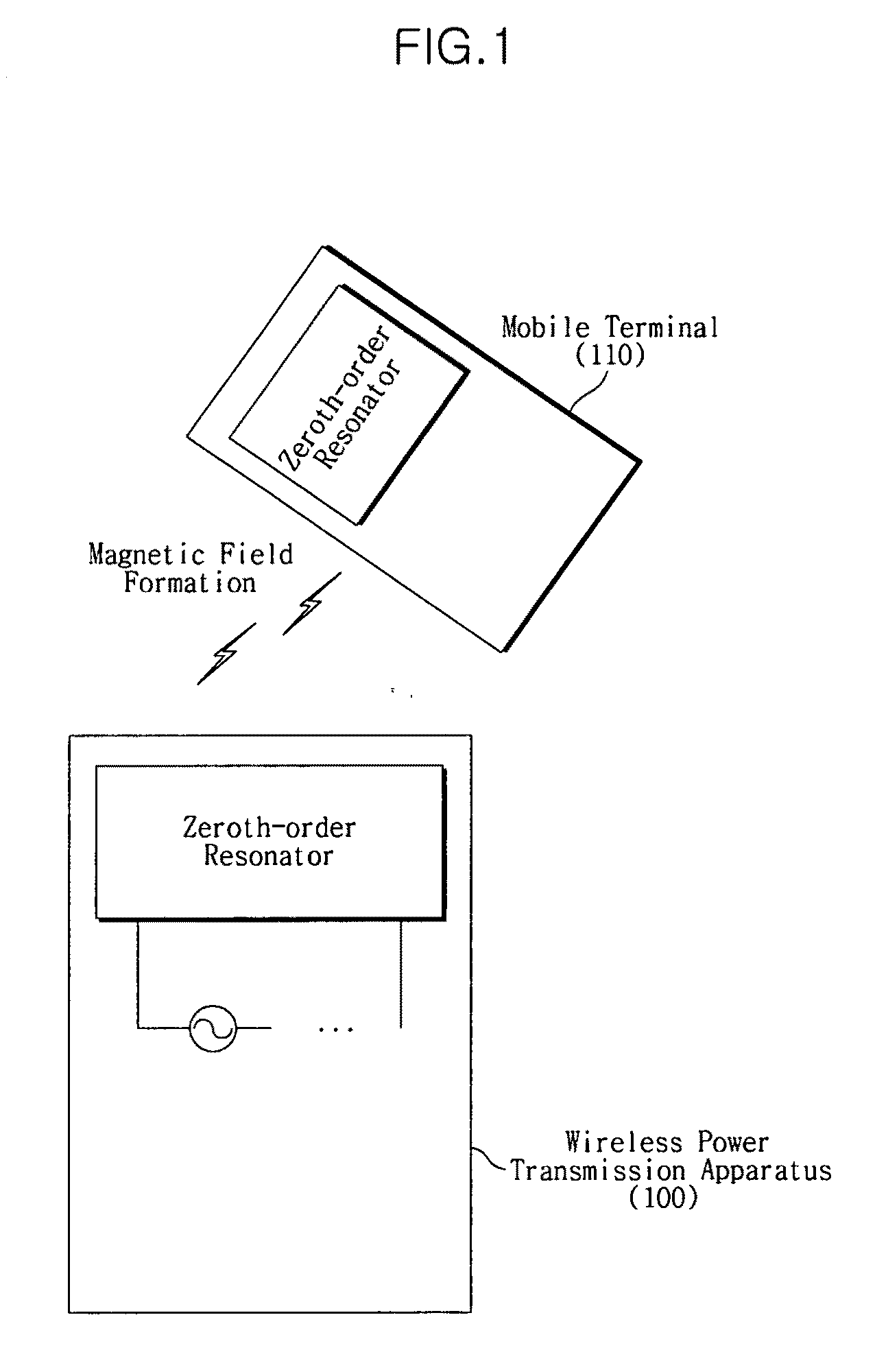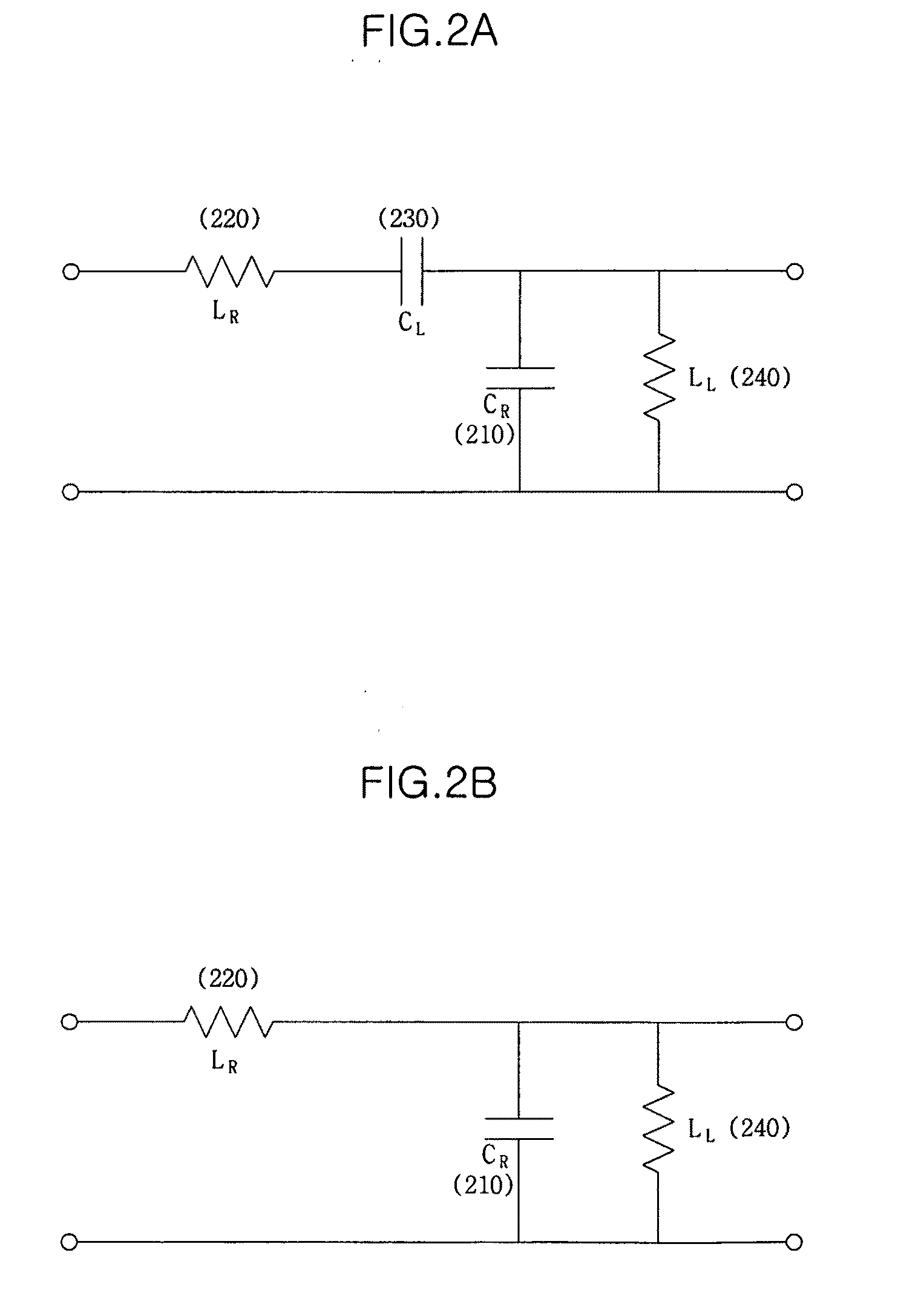Apparatus for wireless power transmission using high Q low frequency near magnetic field resonator
- Summary
- Abstract
- Description
- Claims
- Application Information
AI Technical Summary
Benefits of technology
Problems solved by technology
Method used
Image
Examples
Embodiment Construction
[0023]Reference will now be made in detail to embodiments, examples of which are illustrated in the accompanying drawings, wherein like reference numerals refer to like elements throughout. In this regard, embodiments of the present invention may be embodied in many different forms and should not be construed as being limited to embodiments set forth herein. Accordingly, embodiments are merely described below, by referring to the figures, to explain aspects of the present invention.
[0024]FIG. 1 is a view for explaining the concept of a wireless power transmission apparatus 100 using resonance coupling of a zeroth-order resonator.
[0025]The wireless power transmission apparatus 100 includes a zeroth-order resonator. In FIG. 1, a mobile terminal 110 also includes a zeroth-order resonator and receives power through a magnetic field created by resonance coupling. The received power is stored in the rechargeable battery of the mobile terminal 110.
[0026]Studies on zeroth-order resonators h...
PUM
 Login to View More
Login to View More Abstract
Description
Claims
Application Information
 Login to View More
Login to View More - R&D
- Intellectual Property
- Life Sciences
- Materials
- Tech Scout
- Unparalleled Data Quality
- Higher Quality Content
- 60% Fewer Hallucinations
Browse by: Latest US Patents, China's latest patents, Technical Efficacy Thesaurus, Application Domain, Technology Topic, Popular Technical Reports.
© 2025 PatSnap. All rights reserved.Legal|Privacy policy|Modern Slavery Act Transparency Statement|Sitemap|About US| Contact US: help@patsnap.com



